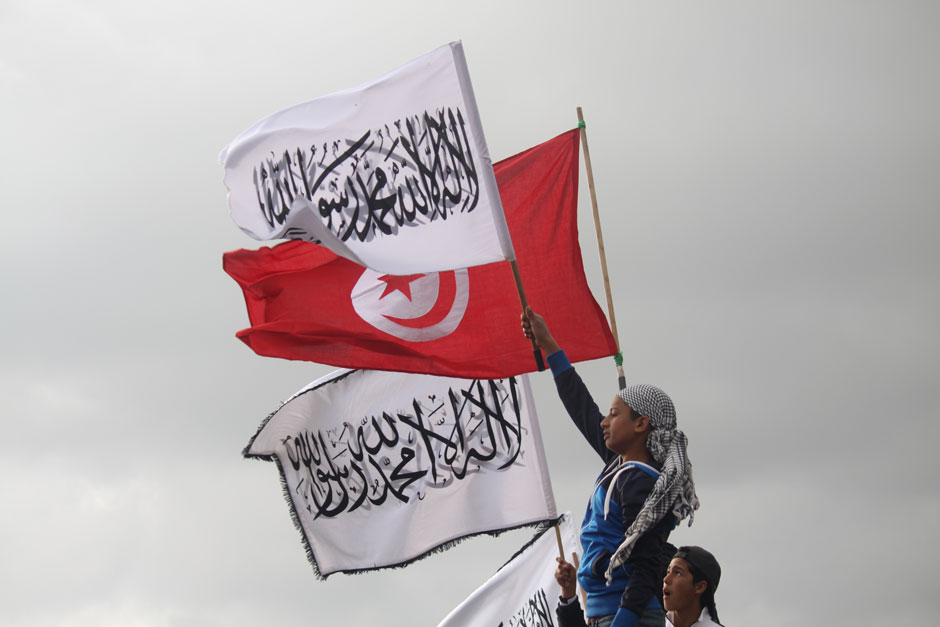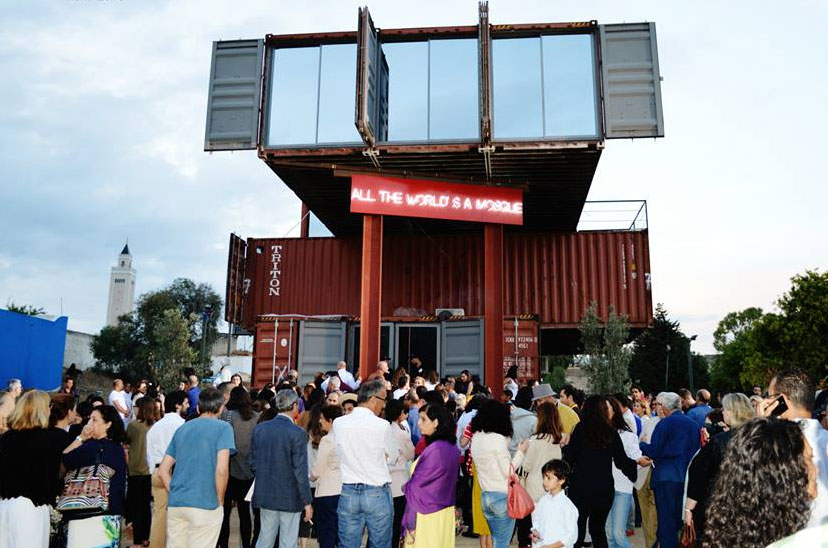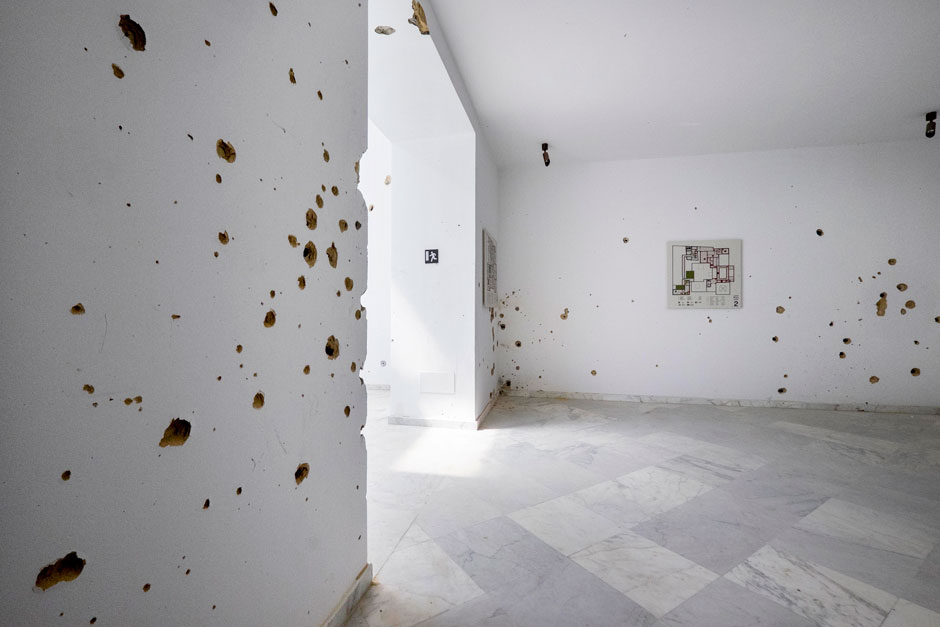How can the Arab world’s most promising and ambitious new democracy also be one of its greatest producers of violent jihadists?
For Tunisia, a small North African country with a thousand-year-old tradition of pacifist Islam, a new constitution based on human rights, and a unity government bringing together Islamists and secularists, the question has become a matter of almost existential importance. Despite its unusual political and cultural assets, it has now suffered the two worst terrorist attacks in its history—both involving radicalized young Tunisians, both seeming to target the post-revolutionary order the country has worked so hard to construct.
In Friday’s attack, a young Tunisian man dressed in black entered a beach resort in the coastal town of Sousse with a Kalashnikov and, in about five minutes, systematically killed more than three-dozen people, nearly all of them European vacationers, before being shot dead by security forces. This followed a similarly devastating massacre this spring at the Bardo Museum in Tunis, one of the world’s most important collections of Roman mosaics. On the morning of March 18, three heavily armed young men had rampaged through the museum, taking hostages and killing twenty-two people; again, nearly all of the dead were European tourists. (The target was not arbitrary: the Bardo is adjacent to the national parliament and occupies the historic Ottoman palace in which Tunisia formally became a French Protectorate in 1881.)
Both attacks appear to have been inspired by ISIS. Meanwhile, according to some estimates, Tunisia has sent more fighters to extremist groups abroad—in Libya and Syria but also Algeria and Mali—than any other country.
But why? Like other Arab nations since the uprisings of 2011, Tunisia has been exposed to the sometimes violent conflicts between resurgent Islamism and its opponents. Unlike many of its counterparts, however, the Maghreb republic has shown an ability to bridge these two sides while building a new state grounded in true democratic principles. At the same time, the country can draw on a modernized judiciary, a French-designed education system, and a notably large number of women in professional life. Nor did I find many overt signs of religious tension during my own visit to Tunisia in late May, between the two attacks—to attend a conference at the Bardo on culture in an age of conflict.
Around Tunis’s revered main mosque, one of the oldest in Africa, restaurants avoid serving alcohol, but the streets are filled with shops catering to European tourists, as they have been for decades, and many women go uncovered. In the wealthier northern suburbs, where members of the political and business elite live along pristine stretches of coastline, one is likely to encounter outright antipathy toward religious fundamentalism. Even in a rough working-class neighborhood in south central Tunis, it was hard to find much evidence of new religious strictures, and the people I met invariably reacted with disgust when I asked about the appeal of ISIS.
Indeed, compared to the chaos of Libya and the large-scale crackdowns of Egypt, post-revolution Tunisia has been an oasis of calm. It was here, of course, that the Arab Spring began, and after three successful changes of leadership, the North African republic is the only such nation to have replaced an authoritarian government with a more or less working democracy—and with relatively little bloodshed. It is also unique in the region in pursuing a truth and reconciliation process designed to expose past state abuses.
On top of this, the capital has had an unusual flowering of cultural expression since the revolution, with daring exhibitions and performances that take on sensitive political issues and even religion. At the end of May, I watched thousands of Tunisians line up to see a provocative installation of contemporary art dealing with the many meanings of Islam, featuring work by artists from across the Middle East. Sponsored by the Kamel Lazaar Foundation—the enterprising private foundation that also organized the Bardo conference—it announced itself with a neon sign stating “ALL THE WORLD’S A MOSQUE” and was staged, improbably, in a series of shipping containers next to the site of ancient Carthage. A few days earlier, I met a young gallery owner who recounted the reaction when she recently showed work by a Tunisian cartoonist whose political and religious satires were in some ways even more strident than Charlie Hebdo. “No one gave me any trouble,” she said.
Yet the Tunisian revolution has had many paradoxical effects. Foremost is the faltering economy. The 2010-2011 uprising against former dictator Zine El Abidine Ben Ali famously began not among the artists and intellectuals in Tunis, but in the neglected interior, instigated by the country’s poorest inhabitants. By many counts, however, the lot of the poor has hardly improved under the new regime. “This is the problem of the two Tunisias,” Ghazi Gherairi, a legal scholar who has been an adviser on the new constitution, told me.
Advertisement
Who has benefited from the revolution? The political elite and people who already had some means. They got political participation, freedom of expression, freedom of movement, freedom to organize. This was extraordinary. They hit the jackpot. But for the marginalized population who started the revolution—the poor and working classes—they say, “We are poorer than before,” and they are right.
Economic distress has reached the middle class as well. The Ben Ali regime was widely reviled by most Tunisians for its corruption and authoritarianism, but as Kenneth Perkins observes in his History of Modern Tunisia (2014), efforts to promote international trade and tourism had enabled many city dwellers by the early 2000s “to enjoy a standard of living approximating that of areas of southern and eastern Europe.” Today, by contrast, almost every Tunisian I met complained about the cost of living, with soaring housing prices—popularly blamed on the estimated one and a half million Libyans who have sought refuge in Tunisia—and basic foodstuffs going for two or three times what they were before 2011. “What revolution?” one young man named Ayman, who had trained as an engineer but could only find work as a driver, told me. “We’re still waiting for it to happen.”
Add to this the dramatic consequences of setting free a society long held in check by a large-scale police state. Part of what made the Tunisian revolution so remarkable, several local observers told me, was the absence of armed groups vying for power; when Ben Ali fled, the security forces almost immediately withered away, and there was a general consensus among the post-revolutionary political factions that any vestiges of the old security apparatus should be prevented from reemerging.
The powerful Ennahda party, a moderate Islamist party that styled itself after Turkey’s ruling Justice and Development Party and which led the government from 2011 to 2013, was particularly concerned to end Tunisia’s long tradition of repression of religious parties and organizations. Prisoners of the old regime, including hardened Islamists, were released, and mosques that had previously been tightly controlled by the state and opened only during prayer hours were now left unregulated. And while the rise of Ennahda dominated public debate, the rapid spread of more hardline Salafist groups, some of them funded from abroad, some of them actively preaching jihad, went largely unnoticed.
“The strategy for countering the Salafists was zero. There wasn’t one,” Sheikh Farid Beji, a moderate imam in his mid-forties, told me, when I visited him at his office in Tunis. He blamed the sudden rise of the Salafists after the revolution on “Wahhabi” ideology imported from Saudi Arabia and Qatar. Though some of the Salafists took active part in the new political scene, others were skeptical of the democratic process and hostile to indigenous religious practices they viewed as insufficiently pure. “Already in 2011, I was very afraid that young people”—whom he said are typically offered money and other incentives for joining a jihadist group—“would start to follow them.”
In fact, Salafist groups based in the Arabian peninsula had already been building a base of support in Tunisia in the years before the revolution. “The thing about the previous regime is that it didn’t understand regional threats,” said Oussama Romdhani, a veteran Tunisian journalist and newspaper editor who briefly served as communications minister for the former government. “It assumed all the bad guys were local. And it made a priority of building an advanced Internet and providing near universal access to satellite TV. This was supposed to be a symbol of progress. But it also paved the way for jihadist recruiting and proselytizing.”
Suddenly, in 2012, tensions burst into the open. That spring, thousands of members of the Salafist group Ansar al-Sharia marched in the holy city of Kairouan, southwest of Tunis, waving black jihadist flags and demanding that the government reform the media, education system, and trade unions along Islamist lines; they also harassed university officials and hung jihadist flags from buildings in the center of Tunis and other cities. A few months later, Islamists affiliated with the group attacked the US embassy in Tunis. Meanwhile, some forty Sufi shrines, or marabouts, in Tunis and elsewhere were attacked by extremists, including a particularly venerated one in Sidi Bou Said, which was burned in January 2013. (When I visited it in May, it had been reconstructed.)
After the leader of a secular opposition party, a strident critic of the Islamists, was gunned down in February 2013, the government took steps to rein in Salafist-led mosques, and thousands of would-be jihadists were prevented from leaving the country. Nonetheless, by the time of the killings at the Bardo Museum this spring, there were, according to several analysts I spoke to, an estimated 3,000 to 4,000 Tunisians fighting in Syria and Iraq, and another 1,000 in Libya. (According to Tunisian police, the man who committed last week’s beach massacre had trained at a jihadist camp in Libya.)
Advertisement
By killing Europeans at the Bardo, the attackers were making a direct assault on the country’s crucial tourism industry, which accounts for up to one in ten Tunisian jobs. One afternoon, I toured the museum galleries with a guard who had been present during the attack. The scars were conspicuous: bullet marks in the stairwells and the tiled walls, ancient statues in glass cases shattered by gunfire. The guard himself had survived the ordeal, and recounted it in horrific detail. But above all were the empty galleries: hardly any visitors at what is normally Tunisia’s most popular site. After the Bardo, many international cruise lines simply cancelled stops in Tunis. And that was before the resort massacre last week.
Still, the government has struggled to provide a security response. Even after the Bardo attack, a new anti-terrorism law proposed by the interior minister remained stalled in parliament. Partly, there have been legitimate fears that preemptive security measures could compromise the values of dignity and human rights that the new constitution has for the first time enshrined. But critics have also accused the Ennahda Party, which has tried to avoid conflict with the Salafists and was badly beaten by the secular Nidaa Tounes party in last fall’s parliamentary elections, of dragging its feet. (Following the attack in Sousse, the current unity government, which includes both parties, pledged to pass the anti-terrorism bill by the end of July.)
Few think that the threat of violence will go away soon. Already in late May, several weeks before the Sousse attack, several Tunisian observers suggested to me that there were likely multiple jihadist cells and that other major sites could be at risk. “We can be certain they will strike again,” Mazen Charif, a security expert who has closely followed the rise of radical groups since the revolution, told me at the time. “We need to help ourselves,” he said. “If the problem is related to Islam, the solution will be with Islam too.”
In the early centuries of Islam, Tunisia was known as a center of religious scholarship and had a prominent part in the development in the Maghreb of Sufism, a tradition that emphasizes interior well-being, self-cultivation, and openness to others. Great Sufi thinkers like Ibn Arabi came to Tunis in the Middle Ages, and even today, after decades of enforced secularism by the former regime, many of Tunisia’s elite identify with the practice. In Sidi Bou Said, a blue-and-white seaside suburb of Tunis, whose cobbled streets are filled with old villas, contemporary art galleries, and traditional textile shops, one man told me, with perhaps only slight exaggeration, that the town was “100 percent Sufi.”
Shortly before his death last fall, the expatriate Tunisian writer and scholar of Islam Abdelwahab Meddeb argued that his country’s deeply embedded religious traditions could be harnessed as a weapon against the new creed of jihad. “Sufism could be the antidote to the illness that plagues Islam today,” he wrote. Others, including Dr. Charif, have cited the example of Morocco, which has given official support to Sufi practices as a counterweight to jihadism.
But such an approach in Tunisia, where religion has increasingly devolved away from the state, faces many obstacles. Sufis tend to reject political Islam and many senior religious scholars seem instinctively wary of becoming involved in national affairs. And many are already alarmed by the numerous attacks on Sufi shrines. As one of the only religious figures in the country who has spoken out strongly against the extremists, Sheikh Beji himself needs a twenty-four-hour armed guard. He has received numerous death threats, he told me. “They say I’m not a Muslim and that I should be killed.”





